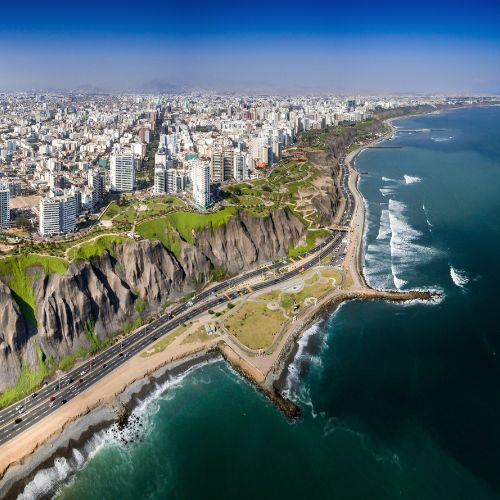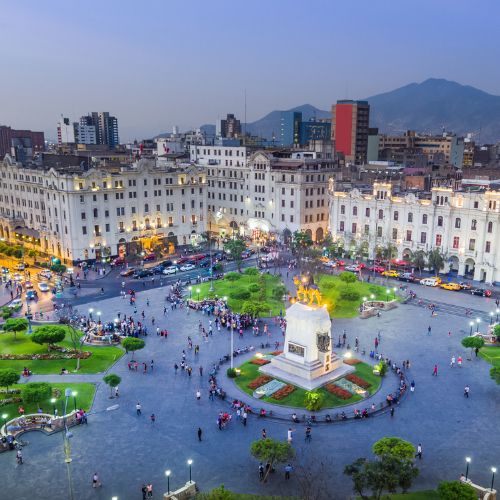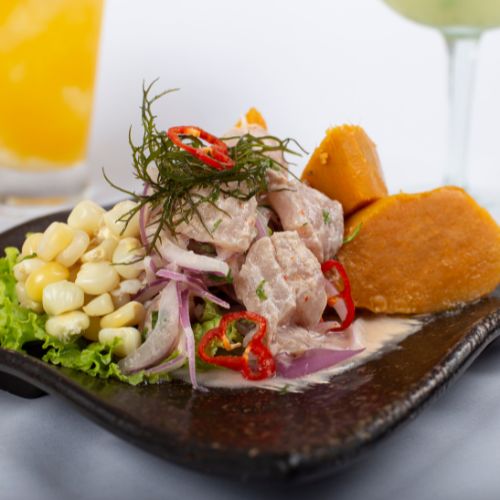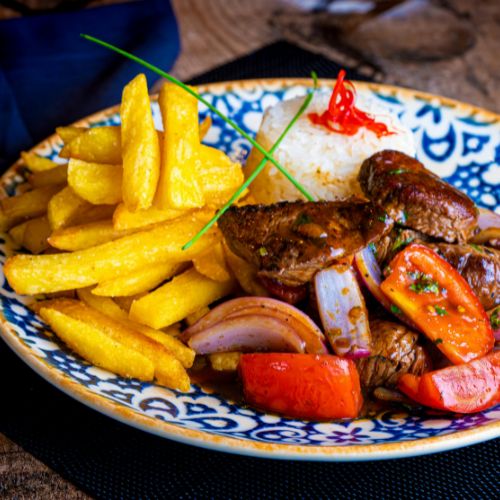Lima, founded on January 18, 1535 by the Spaniard Francisco Pizarro, is the capital of Peru and one of the most important cities in South America. Pre-Hispanic cultures such as the Lima and Ichma developed in its territory, and it later became part of the Inca domain. During the colonial period, Lima was the seat of the Viceroyalty of Peru, becoming the most influential political, religious, economic, and cultural center of the continent. For its historical and architectural value, its historic center was declared a UNESCO World Cultural Heritage Site in 1991.
Today, Lima is home to more than 11.5 million people. The city includes both modern districts such as Miraflores, San Isidro, and Barranco, as well as popular neighborhoods.
Recognized as the gastronomic capital of the Americas, Lima stands out for a cuisine that blends pre-Hispanic, Spanish, African, Chinese, and Japanese heritages. Restaurants like Central, Maido, and Astrid & Gastón have elevated its cuisine to the highest international level. Dishes such as ceviche, ají de gallina, causa limeña, and lomo saltado represent the cultural mix that defines Lima’s identity.
Table of Contents
Lima is the capital of Peru because it was founded on January 18, 1535 by the Spaniard Francisco Pizarro, who chose it as the seat of government for the Viceroyalty of Peru. Its strategic location on the country’s central coast, near the sea and with access to fertile valleys such as the Rímac River valley, facilitated trade, political control, and connection with Spain through the port of Callao.
During the colonial era, Lima became the most important administrative, economic, religious, and cultural center of South America, hosting key institutions such as the Royal Audiencia of Lima, the National University of San Marcos (the oldest in the Americas, founded in 1551), and large convents and churches.
After independence in 1821, Lima was confirmed as the capital of Peru due to its infrastructure, political centrality, and historical role in organizing the new republican state. Today, it remains the political, economic, and cultural hub of the country.

Lima’s Historic Center was declared a UNESCO World Cultural Heritage Site in 1991 due to its outstanding universal value as an example of colonial urban planning and architecture in Latin America. Lima preserves a city layout established in 1535 that served as a model for many other colonial cities in the Americas.
Its center includes a large number of historic buildings from the 16th to 19th centuries, including:
Lima was the capital of the Viceroyalty of Peru, the most powerful in South America. From here, much of the continent was governed during the colonial era, giving it a central role in the political, religious, and cultural history of Latin America.
Despite modern growth, the historic center retains its layout and much of its original buildings. It remains a vibrant area with active administrative, religious, and commercial functions.

Lima is considered the gastronomic capital of the Americas due to its culinary diversity, multicultural history, and international recognition of its chefs and restaurants.
Lima's cuisine is the result of a unique blend of influences:
Lima restaurants such as Central, Maido, and Astrid & Gastón consistently appear in The World's 50 Best Restaurants rankings. In 2023, Central was named the best restaurant in the world, cementing Lima’s place in the global culinary elite. Lima has also hosted events like Mistura, the largest gastronomic fair in Latin America.
Peruvian culinary professionals have taken the country’s cuisine to international stages, promoting the concept of “national gastronomic pride.” Lima offers both haute cuisine and high-quality street food.
Thanks to Peru’s geographic diversity (coast, highlands, and jungle), Lima has access to:


